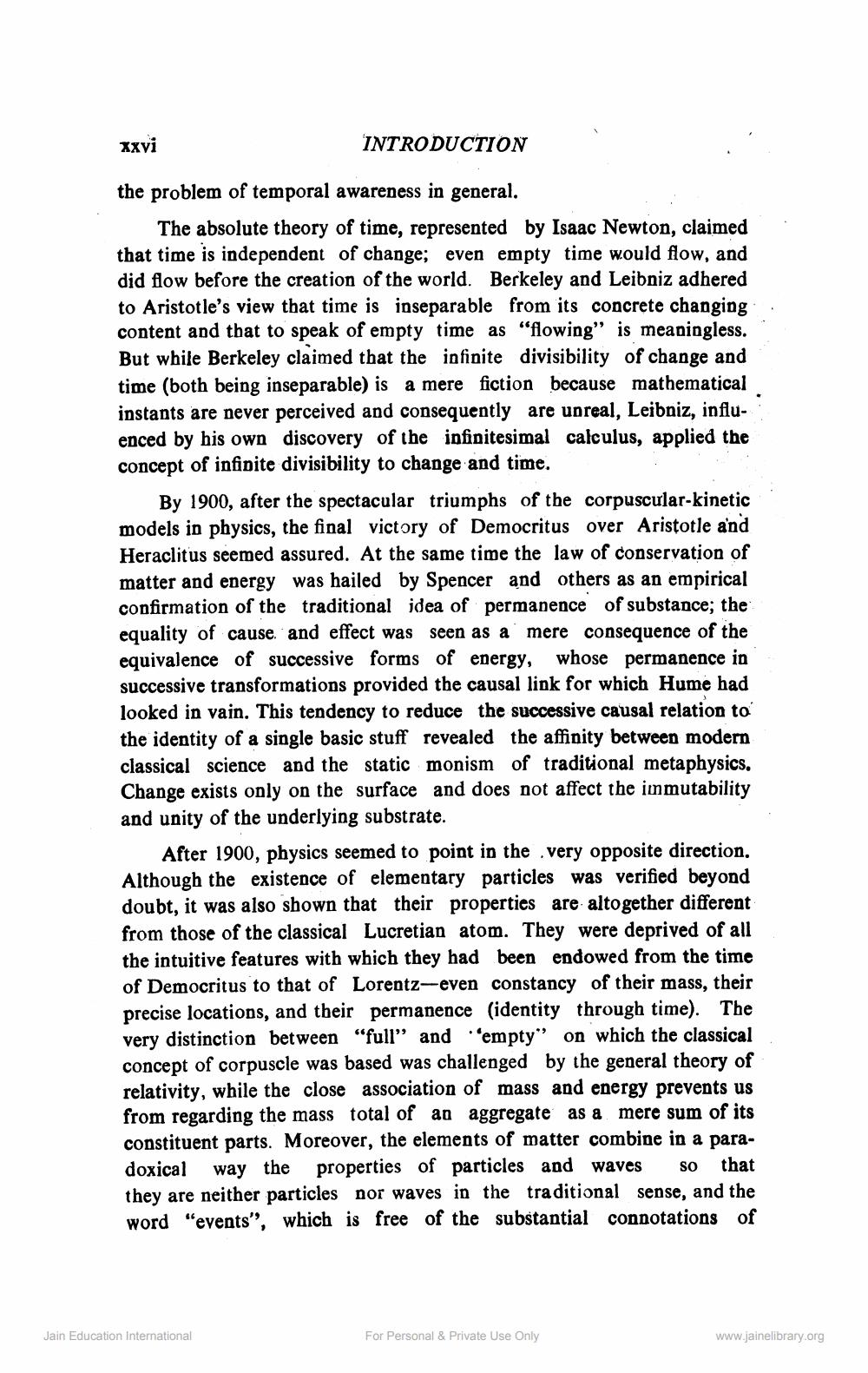________________
xxyi
INTRODUCTION
the problem of temporal awareness in general.
The absolute theory of time, represented by Isaac Newton, claimed that time is independent of change; even empty time would flow, and did flow before the creation of the world. Berkeley and Leibniz adhered to Aristotle's view that time is inseparable from its concrete changing content and that to speak of empty time as "flowing" is meaningless. But while Berkeley claimed that the infinite divisibility of change and time (both being inseparable) is a mere fiction because mathematical instants are never perceived and consequently are unreal, Leibniz, influenced by his own discovery of the infinitesimal calculus, applied the concept of infinite divisibility to change and time.
By 1900, after the spectacular triumphs of the corpuscular-kinetic models in physics, the final victory of Democritus over Aristotle and Heraclitus seemed assured. At the same time the law of conservation of matter and energy was hailed by Spencer and others as an empirical confirmation of the traditional idea of permanence of substance; the equality of cause, and effect was seen as a mere consequence of the equivalence of successive forms of energy, whose permanence in successive transformations provided the causal link for which Hume had looked in vain. This tendency to reduce the successive causal relation to the identity of a single basic stuff revealed the affinity between modern classical science and the static monism of traditional metaphysics. Change exists only on the surface and does not affect the immutability and unity of the underlying substrate.
After 1900, physics seemed to point in the very opposite direction. Although the existence of elementary particles was verified beyond doubt, it was also shown that their properties are altogether different from those of the classical Lucretian atom. They were deprived of all the intuitive features with which they had been endowed from the time of Democritus to that of Lorentz-even constancy of their mass, their precise locations, and their permanence (identity through time). The very distinction between "full" and "empty' on which the classical concept of corpuscle was based was challenged by the general theory of relativity, while the close association of mass and energy prevents us from regarding the mass total of an aggregate as a mere sum of its constituent parts. Moreover, the elements of matter combine in a paradoxical way the properties of particles and waves so that they are neither particles nor waves in the traditional sense, and the word "events", which is free of the substantial connotations of
Jain Education International
For Personal & Private Use Only
www.jainelibrary.org




